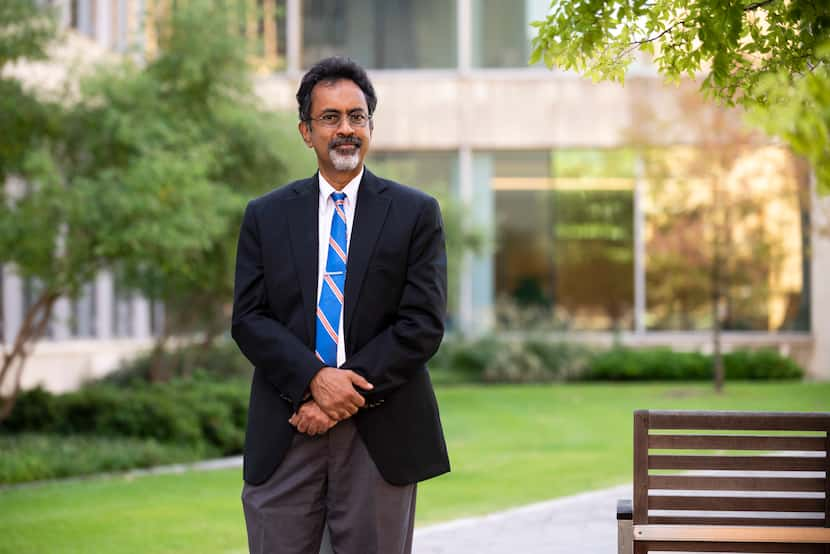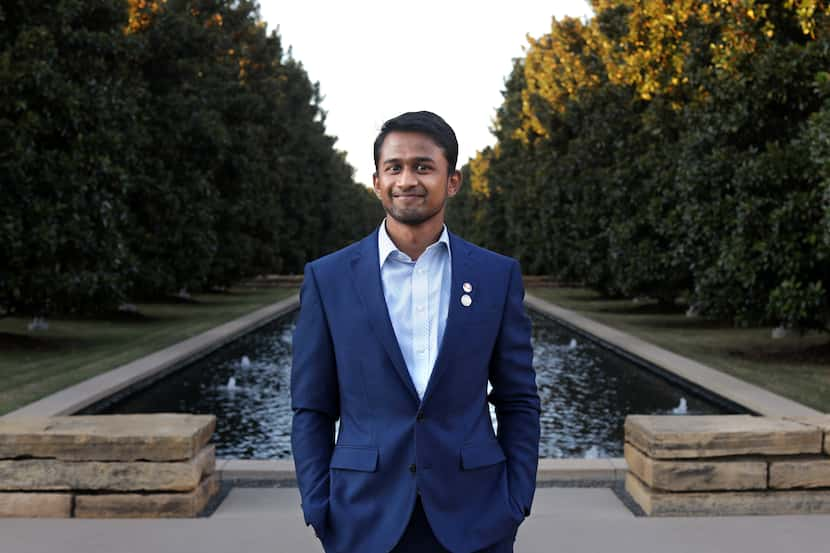For decades, foreign students coming to U.S. universities have been at the forefront of innovation and progress. Countless technological and societal advancements were created by immigrants who came to the U.S. to study and then went on to create or work in companies like Google, Tesla, AT&T, Johnson & Johnson and Texas Instruments.
However, in recent years, universities in the U.S. are seeing a dip in enrollment from international students, which a recent analysis shows could have far-reaching effects for Texas and the nation.
In 2019-2020, the number of international students nationwide declined by 1.8% — to just below 1.1 million students — compared to the previous school year.
From the 2018-2019 to 2019-2020 school years, international students’ enrollment in the Lone Star State fell by 5.9%, according to Open Doors, which oversees international enrollment in the U.S. The majority of foreign students in Texas come from India, China, Mexico, Vietnam and South Korea.
The decline of international students can be attributed to factors such as a highly polarized debate around immigration, more competition from countries like Canada and Australia, additional visa restrictions for dependents and an uncertain path to get a work visa in the U.S. after graduation.
U.S. universities — public and private — still welcome more international students than any other country, but the decline has been steady. New international student enrollment went from 300,743 in 2016 to 267,712 in 2020, an 11% decline in five years.
“Higher education institutions in the United States are having a harder time competing in the global marketplace because other countries are doing more (offering easier paths for work opportunities after graduation). We still have the best higher education system in the world,” said Lisa Montoya, vice provost for global initiatives at the University of Texas at San Antonio.
The trend, which accelerated during the last five years, could cost Texas up to $2 billion per year, according to analysis from the National Association of Foreign Student Advisers, a worldwide nonprofit association dedicated to international education.
Texas, with its UT, Texas A&M and Texas State higher education systems, plus dozens of private research institutions, benefits greatly from the influx of foreign talent. It ranks third — below New York and California — in enrollment from international students.
Coming out of the pandemic-imposed restrictions, universities worry about what the enrollment decline of foreign students means not only to the economy of these institutions but also to the makeup of their student body resembling a globalized business landscape.
Contributing factors
Julia Gelatt, senior policy analyst at the Migration Policy Institute, said that the restrictive immigration policies imposed during the Trump administration led to the decline in the number of international students.
“(There was) more scrutiny and more vetting applied to all kinds of visas, including student visas that led to some denials to foreign students (and) the opportunity to come to the U.S.,” she said.
The Trump administration restricted H-1B visas — issued to specialized workers with higher education degrees — arguing that it would ensure American employees were not “replaced” by overseas workers. This had an impact on major tech companies that rely on foreign workers, many graduating from the U.S. education pipeline.
Montoya, the UT-San Antonio vice provost, added, “With the last presidential administration, the country seemed less friendly to international people and international students, and that caused a dampening of a lessening of enthusiasm associated with studying in the U.S. perhaps.”
Bhushan Sonmale, a 26-year-old computer scientist from India, graduated in the spring from the University of Texas at Dallas with a master’s in information technology and management. He was able to stay in the country thanks to a work visa sponsored by the accounting and consulting firm Ernst & Young.
Sonmale had started working part-time while he was still in school, then his employer sponsored his H-1B visa after he graduated. About 65,000 H-1B visas — valid for three years — are issued for full-time specialty workers.
Sonmale’s visa was approved Oct. 1.
“I was very lucky that they sponsored my visa. I know how difficult it is these days,” Sonmale, a native of Mumbai, said. “I don’t know what will come after my visa expires, but for now, I will continue working to see the possibility of staying here permanently.”
Economic and cultural losses
Losing international students presents a big challenge for Texas colleges in different aspects: culturally and economically.
The U.S. economy is propelled by immigrant entrepreneurs, professors, scientists and other professionals who originally came to the country as college students.
Pranesh Aswath, 60, came in 1985 from Bangalore, India, to study for his master’s in materials science and engineering at Brown University. Now he’s the provost and vice president for academic affairs at the University of Texas at Arlington.
“Bringing international students to UT-Arlington, or any university gives that cultural immersion by interacting with students from other countries. As students graduate and enter the workforce, the companies now are multinational companies, and they have people from all over the world working there,” Aswath said.
“So if students from Texas had those experiences in college of having worked and studied with people outside of their own culture, it’s a lot easier to work in these corporations,” he said.

UT-Arlington enrolled 4,582 international students during this fall semester, 11% of the total enrollment.
According to Aswath, allowing international students in U.S. institutions provides a cultural emergence and experience for American students.
Justin Yancy, president of the Texas Business Leadership Council, said the diversity that comes with having international students helps Texas businesses to be more competitive and contribute to growth in the economy.
“We need not be scared of international growth in terms of talent and workforce. We need to embrace that. We need talented, skilled workforce, and need it from around the state, country and the world as well,” Yancy said.
According to the National Association of Foreign Student Advisers, in the 2019-2020 school year, international students helped support 22,157 jobs in Texas.
These students pay full tuition, which on average is about three times higher than in-state tuition. They also spend money and contribute to local taxes anytime they buy food, gas, pay living expenses and shop or travel.
“We do need them; we can’t do it alone. With the kind of growth we need to continue to meet the demands of the state, we can’t do it alone,” Yancy said.
Where are they going?
Countries like Australia and Canada make it easy for international graduates to stay and work and prioritize other applicants for permanent residency. Britain last year introduced a global talent visa that fast-tracks legal status for people in fields in which there’s a shortage of demand for qualified workers.
“Students from around the world are looking at their options, and they’re interested in the quality of education that they can get in the country (they are choosing to got to), but also in their work opportunity after they complete their education,” Gelatt said. “So students may be considering going to other places like Canada or Europe, and we may be losing out in a global talent competition.”
Montoya said the citizenship path for international students in Canada is very attractive and hard to compete against. For example, students have different options to apply for a working visa or permanent residency without having a company sponsoring them after they complete their education in the country.
Still, she is confident that UT institutions will continue to work together to bring more students and continue offering diversity in higher education in the state.
Institutions across the state also emphasize programs in science, technology, engineering, arts and mathematics fields and cybersecurity.
For example, the University of North Texas is offering newer degrees in high-demand fields like data analytics, artificial intelligence and cybersecurity. These programs will help to prepare students for the “Big Data economy” of the future, Pieter Vermeulen, director of international recruitment at UNT, said in a statement.
“Getting to work on teams that are diverse (culturally) from different countries, allows students (natives) to build intercultural communication skills and to understand how to work with people from all around the world. A skill that will help (them) when entering the workforce,” Montoya said.
Kimaya Vyavhare, 30, a native of India who in 2020 got a doctorate in materials science from UT-Arlington, is one of those graduates of American universities who is looking to other countries for professional opportunities.
For now, she works for Kennametal, a company supplier of tooling and industrial materials in Pennsylvania, thanks to a one-year professional training special work permit. But there are no guarantees beyond that.
She thinks the process to secure an immigrant visa that later can be adjusted to permanent residency is too cumbersome and “not fair.”
“I don’t have intentions of staying. I’m just looking for professional experience,” Vyavhare said. “I have seen other friends going through the visa path and it is just too long (and) not worth it. We invest so much already by studying here and then we need to do more.”
She said two of her cousins are looking for options to study abroad.
But it’s unlikely they’ll follow in her footsteps and come to Texas. Right now, they both are looking at institutions in Canada.


/cloudfront-us-east-1.images.arcpublishing.com/dmn/XUYQH3NU7DFLYWKRZXETJ7O74I.jpg)
/cloudfront-us-east-1.images.arcpublishing.com/dmn/QPOSB4S4DBHALFEOL6FODM5WKI.JPG)
/cloudfront-us-east-1.images.arcpublishing.com/dmn/24XVXMA6FZG5PBJ7I6STXRUT6Y.jpg)
/cloudfront-us-east-1.images.arcpublishing.com/dmn/VPUG5WYVLBHDRA4MV27RCW7HY4.jpg)
/cloudfront-us-east-1.images.arcpublishing.com/dmn/3ERY2KAK6C42D67BSQEX24Z3YI.jpg)